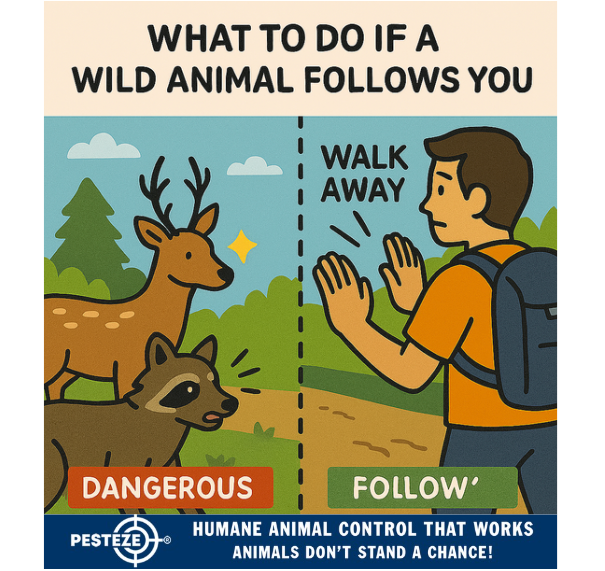WHAT TO DO IF A WILD ANIMAL FOLLOWS YOU

WHAT TO DO IF A WILD ANIMAL FOLLOWS YOU
SUMMARY
Being followed by a wild animal can be unsettling and potentially dangerous. Whether you're hiking, walking your dog, or exploring nature, knowing how to respond calmly and effectively is crucial. This guide outlines safe, humane, and practical steps to take when a wild animal begins to follow you. From identifying the animal’s intent to protecting yourself and notifying authorities, these strategies will help you stay safe while respecting wildlife boundaries.
FEATURES
-
Stay Calm and Alert: Avoid panic and keep your focus on the animal’s behavior.
-
Do Not Run: Learn why fleeing can trigger a predator’s chase instinct.
-
Make Yourself Appear Larger: Use body language and noise to deter the animal.
-
Protect Pets and Children: Keep vulnerable companions close and quiet.
-
Create Distance Safely: Back away slowly while maintaining awareness of surroundings.
-
Report the Encounter: Notify wildlife officials if the animal shows persistent or aggressive behavior.
GUIDE DESCRIPTION
Encountering a wild animal in nature is one thing—being followed by one is another. Whether it’s curiosity, territorial behavior, or a search for food, animals may trail humans for various reasons. This guide helps you respond appropriately to ensure your safety and the animal’s well-being.
The first step is to stay calm. Sudden movements, loud noises, or panic can escalate the situation. Keep your eyes on the animal without making direct eye contact, which can be perceived as a threat. Observe its body language—ears back, tail twitching, or vocalizations may indicate stress or aggression.
Never run. Running can trigger a chase response, especially in predators like coyotes, foxes, or mountain lions. Instead, stand tall, raise your arms, and speak firmly. Making yourself appear larger and more assertive can discourage the animal from continuing to follow.
If you’re with pets or children, gather them close. Pick up small children and leash pets immediately. Their movements and sounds can attract unwanted attention from wildlife.
Begin to back away slowly. Choose a path that keeps you visible and avoids dense brush or blind corners. If possible, move toward a populated area or shelter. Continue to monitor the animal’s behavior as you retreat.
If the animal continues to follow or shows signs of aggression, report the encounter to local wildlife authorities. Provide details such as location, species, and behavior to help officials assess the risk and take appropriate action.
By staying calm, creating distance, and knowing when to seek help, you can safely navigate a wildlife encounter and contribute to responsible coexistence with nature.
- Amy Chang


Comments 0